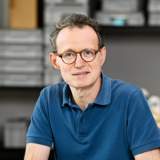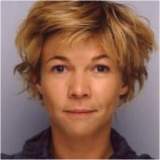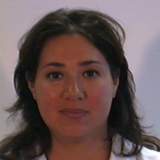Innovation Through Art & Design
In this course offered by TU/e innovation Space, students undertake open-ended, challenge-based projects with a high degree of independence. Support is provided through coaching, feedback sessions, workshops, lectures, and field trips.
- Teachers: G. Guri, H. M. T. Aarts, I. Hallensleben, C. A. Apon, I. M. M. J. Reymen.
- Academic level: Bachelor.
- Stakeholders: Students, TU/e staff, challenge owners, professionals (in cultural field), scientific staff (non-TU/e).
- Disciplines: Open to all disciplines within TU/e.
- Resources: All students can make use of the TU/e innovation Space workshops, tools and workspaces. In addition, challenge owners can offer additional resources.
For more information, check out the online studyguide.
INTENDED LEARNING OUTCOMES (ILOs)
After this course, students should be able to:
Approach:
- Research, select, and apply appropriate design, engineering and artistic approaches and tools in order to create an innovative, artistic and science-based demonstration model.
Analysis:
- Interpret a challenge with artistic and technological aspects, and identify possible design and engineering directions.
Synthesis:
- Develop an original and integrative design, resulting in a creative demonstration model.
- Represent a demonstration model in an original, experiential and understandable manner.
Interdisciplinarity & project management:
- Identify, envision, and amplify the role and contributions of engineering disciplines and other competencies.
- Collaborate well as a team with all involved stakeholders.
Reflection:
- Define and regularly reflect on both team and personal development goals.
- Individual: Reflect on the individual role in an interdisciplinary team and on the development of one’s own professional identity.
SETUP
This course aims toward Challenge-Based Learning in interdisciplinary teams (3-5 students), working on challenges with both technological and artistic/design aspects. Students from all study programs (chemistry, automotive, physics etc.) are welcome, even if they believe they lack creative or artistic competencies.
Students choose from a variety of challenges brought in by professional designers and artists. These challenges can start with a concrete question, such as ‘How can we perceive the news in new ways by using technology (e.g. VR, AR)?’ after which the team will look for innovative and creative ideas, but students can also be challenged to develop hypothetical scenarios based on scientific developments with which radically new research questions can be asked.
Whatever the starting point, students will be challenged to go off the beaten track. Operating outside their comfort zone allows them the opportunity to reflect on their own technological/engineering/scientific competencies, and find new ways to revalue, develop and validate them. In combination with art methodologies, students will broaden their perspectives and increase their skills to develop innovative ideas.
The course is not based on lectures, but on studio-style group work, self-study and personal and team development. It includes workshops, guest lectures and visits/guided tours to design studios, museums and art galleries, festivals and other venues that may be relevant to the projects.
With the team -including the designer/artist- students determine the goal for the semester, resulting in a demonstration model: a concept or product/installation (prototype), sometimes to be exhibited or to use in theater shows, concerts etc. Partners like Dutch Design Foundation, GLOW or MU Hybrid Art House can offer ways to showcase the projects. This not only allows it to be shown to a wider audience but is also a way to gather feedback.
LEARNING ACTIVITIES
Students learn how to develop an art/design project with technological/scientific aspects within an interdisciplinary team through various learning activities, distributed across the two quartiles.
- Workshops & lectures, by coaches, scientific staff & professionals
- Feedback sessions with coaches, and with challenge owners
- Peer to peer progress sessions
- Tours/visits
- Mid term and final presentations
ASSESSMENT
Students are assessed on individual reflections on learning objectives and the result of teamwork, including a final development report, a pitch with a demonstration model, and team evaluation by lecturer and peers. Both parts have an interim review.
EVALUATION
The course is evaluated in two ways: teachers with students, and only students. There are teacher meetings at which they evaluate, and questionnaires for students to fill out.



